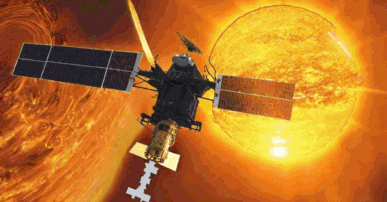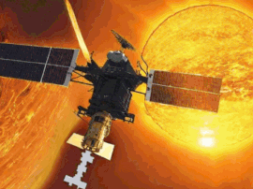
Another Feather in ISRO’s Cap: Aditya-L1 Reaches its Destination 15 Lakh Kms from Earth
Manas Dasgupta
NEW DELHI, Jan 6: In another historic moment for India in space, Aditya-L1, the country’s first mission to study the sun, has reached its final destination, 127 days after it was launched on September 2, 2023, from the Satish Dhawan Space Centre in Sriharikota. The Indian Space Research Organisation (ISRO) placed the Aditya-L1 spacecraft in a halo orbit around the Lagrangian point (L1) on Saturday.
After a 1.5 million kilometre long journey the spacecraft was placed in a halo orbit around L1 following a firing manoeuvre which was carried out by ISRO Scientists and Engineers at the ISRO Telemetry Tracking and Command Network (ISTRAC) in Bengaluru.
Praising the country’s scientists for the achievement, Prime Minister Narendra Modi said India has created yet another landmark and that the country will pursue new frontiers of science to benefit humanity.
In a post on X on Saturday, the PM wrote, “India creates yet another landmark. India’s first solar observatory Aditya-L1 reaches its destination. It is a testament to the relentless dedication of our scientists in realising among the most complex and intricate space missions. I join the nation in applauding this extraordinary feat. We will continue to pursue new frontiers of science for the benefit of humanity.”
The success comes months after India scripted history with the Chandrayaan-3 mission, becoming the fourth nation to reach the moon and the first country to achieve a successful soft landing near the South Pole, the darker side of the Moon.
Aditya L1, which is India’s first space-based observatory to study the Sun, has been placed in a halo-shaped orbit around the Sun-Earth Lagrange Point 1. The point is around 1.5 million km from the Earth, in the direction of the Sun.
Lagrange points, named after French mathematician and astronomer Joseph-Louis Lagrange, are unique locations in space where the gravitational force of two massive bodies nearly neutralise each other. Maintaining the orbit of spacecraft around these points is easier and requires less fuel.
The space observatory will keep an eye on the changing space weather and warn scientists about events like solar storms and flares that may impact the working of satellites. “Since Aditya-L1 will look at Sun continuously, it can warn us of imminent solar electro-magnetic effects on Earth and protect our satellites, and other power electrical and communications networks from getting disrupted. This will help continue normal operations by operating them in safe modes, till the solar storm passes by,” the ISRO chairman S Somanath said.
The ISRO chief had said India has assets worth over ₹ 50,000 crore in space, including over 50 operational satellites, and an observatory like Aditya L1 will help protect them from damaging solar events.
According to ISRO, the key objectives of the mission are understanding the coronal heating and solar wind acceleration; understanding initiation of Coronal Mass Ejection (CME), flares and near-Earth space weather; gaining knowledge of coupling and dynamics of the solar atmosphere; and getting a deeper understanding of solar wind distribution and temperature anisotropy (non-uniformity in different directions).
Solar wind refers to a continual stream of protons and electrons from the sun’s corona, or outermost atmosphere, while coronal mass ejections are huge expulsions of coronal plasma and magnetic field lines ejected from the sun.
L1 is roughly about 1.5 million km from the Earth and the distance of L1 from Earth is approximately 1% of the Earth-Sun distance. With the Aditya-L1 satellite placed in the halo orbit around the L1 point it will be continuously viewing the Sun without any occultation/eclipse.
This will provide a greater advantage of observing the solar activities continuously. Aditya-L1 carries seven payloads to observe the photosphere, chromosphere, and the outermost layers of the Sun (the corona) using electromagnetic and particle detectors. Using the special vantage point of L1, four payloads will directly view the Sun and the remaining three payloads will carry out in-situ studies of particles and fields at the L1.
According to ISRO the satellite will spend its whole mission life orbiting around L1 in an irregularly shaped orbit in a plane roughly perpendicular to the line joining the Earth and the Sun.
Aditya-L1 has a mission life of five years during which its payloads are expected to provide the most crucial information to understand the problem of coronal heating; coronal mass ejection; pre-flare and flare activities and their characteristics; dynamics of space weather; and propagation of particles and fields.
There are currently four operational spacecraft at L1 which are WIND, Solar and Heliospheric Observatory (SOHO), Advanced Composition Explorer (ACE) and Deep Space Climate Observatory (DSCOVER).













